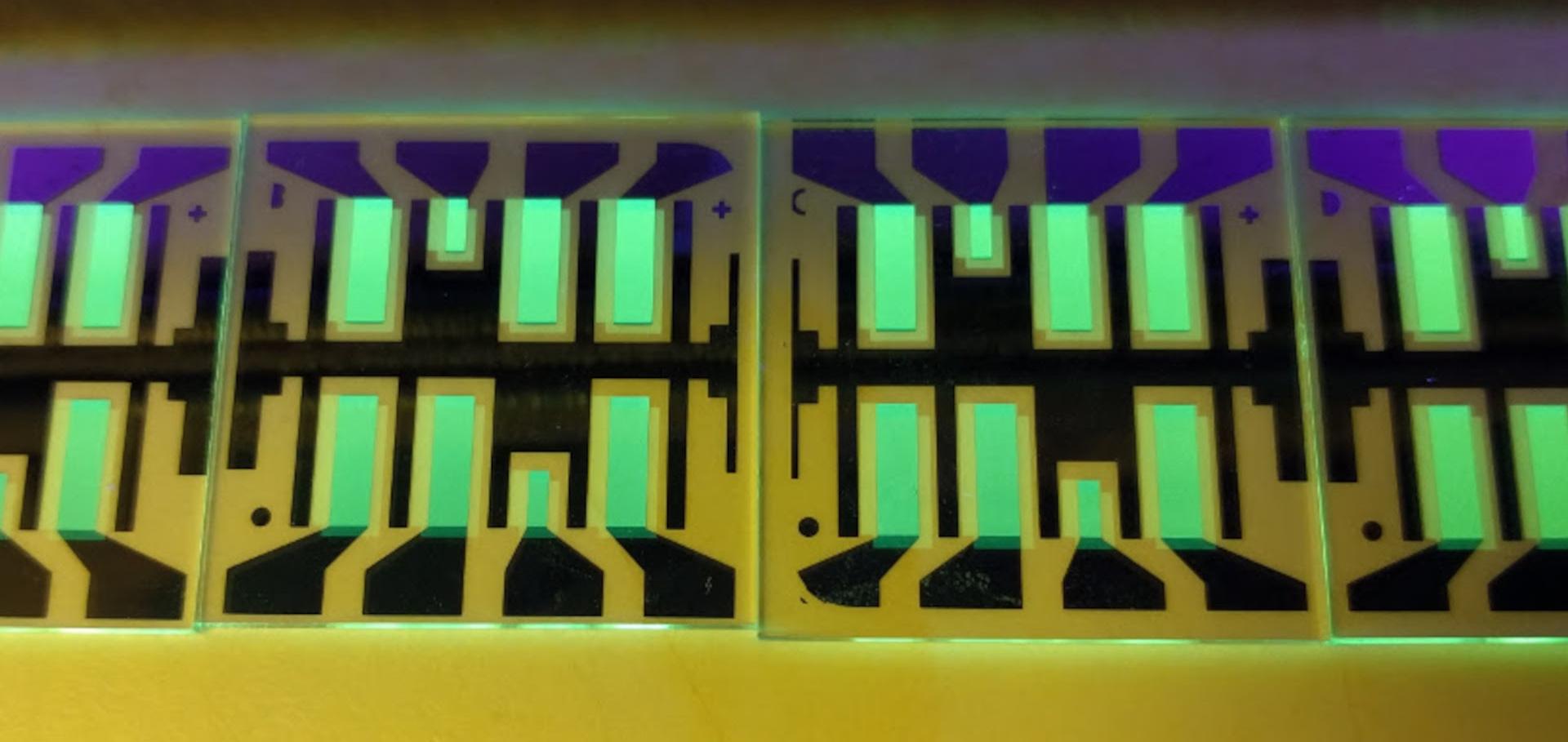An inter-laboratory stability study of roll-to-roll coated flexible polymer solar modules
Solar Energy Materials and Solar Cells 95:5 (2011) 1398-1416
Abstract:
A large number of flexible polymer solar modules comprising 16 serially connected individual cells was prepared at the experimental workshop at Risø DTU. The photoactive layer was prepared from several varieties of P3HT (Merck, Plextronics, BASF and Risø DTU) and two varieties of ZnO (nanoparticulate, thin film) were employed as electron transport layers. The devices were all tested at Risø DTU and the functional devices were subjected to an inter-laboratory study involving the performance and the stability of modules over time in the dark, under light soaking and outdoor conditions. 24 laboratories from 10 countries and across four different continents were involved in the studies. The reported results allowed for analysis of the variability between different groups in performing lifetime studies as well as performing a comparison of different testing procedures. These studies constitute the first steps toward establishing standard procedures for an OPV lifetime characterization. © 2011 Elsevier B.V. All rights reserved.Consensus stability testing protocols for organic photovoltaic materials and devices
Solar Energy Materials and Solar Cells 95:5 (2011) 1253-1267
Abstract:
Procedures for testing organic solar cell devices and modules with respect to stability and operational lifetime are described. The descriptions represent a consensus of the discussion and conclusions reached during the first 3 years of the international summit on OPV stability (ISOS). The procedures include directions for shelf life testing, outdoor testing, laboratory weathering testing and thermal cycling testing, as well as guidelines for reporting data. These procedures are not meant to be qualification tests, but rather generally agreed test conditions and practices to allow ready comparison between laboratories and to help improving the reliability of reported values. Failure mechanisms and detailed degradation mechanisms are not covered in this report. © 2011 Elsevier B.V. All rights reserved.Dicyanovinyl sexithiophene as donor material in organic planar heterojunction solar cells: Morphological, optical, and electrical properties
Organic Electronics 12:12 (2011) 2243-2252
Abstract:
We study the morphology and optical properties of vacuum deposited films of the α-ω-bis-(dicyanovinylen)-sexithiophene, comprising four butyl side chains DCV6T-Bu(1,2,5,6) (DCV6T-Bu). An absorption band showing vibronic substructure indicates ordered molecular arrangement in the solid state. The room temperature (RT) self-organization is confirmed by X-ray diffraction (XRD). For films grown on heated substrates, XRD analysis and atomic force microscopy display increased crystallinity with larger domain size. In correlation to the XRD data, with increasing substrate temperature the absorption of the heated films becomes more structured and continuously shifts to longer wavelengths. Further, the hole mobility in DCV6T-Bu/C60 planar heterojunction (PHJ) devices, utilizing DCV6T-Bu films grown at RT and elevated substrate temperature is investigated using the charge extraction by linearly increasing voltage method. The derived values of the activation energy are consistent with the corresponding DCV6T-Bu film morphology. However, the charge carrier mobility does not increase with improving molecular order, as is evident by the obtained mobility values of 1.0 × 10-6 cm2/V s for the RT and 3.1 × 10-7 cm2/V s for the heated device, respectively. Finally, DCV6T-Bu/C60 PHJ solar cells consisting of absorber layers deposited on heated and unheated substrates are compared. © 2011 Elsevier B.V. All rights reserved.Increase of charge carrier lifetime in dicyanovinyl-quinquethiophene: Fullerene blends upon deposition on heated substrates
Organic Electronics 12:12 (2011) 2258-2267
Abstract:
The dissociation of excitons and the creation of charges in the active bulk layer in small molecule organic solar cells is significantly influenced by the morphology of the active layer. Here, we influence the active layer morphology of dicyanovinyl-quinquethiophene (donor): fullerene C60 (acceptor) blend layers by deposition on heated substrates. The signatures of the donor cations and triplet excitons are investigated by photoinduced absorption spectroscopy (PIA) at different measurement temperatures. With increasing measurement temperatures, we observe a decrease in triplet exciton generation rate, accompanied by an increase in cation generation rate. At room temperature we compare the dynamics of donor cations in blend layers deposited at room temperature (Tsub = 30 °C) and blend layers deposited on a heated substrate (Tsub = 80 °C) by PIA. The cation lifetime (≈10 - 100 μs) is significantly increased in the heated layer (Tsub = 80 °C), whereas the cation generation rate is decreased in the heated layer compared to the unheated layer (Tsub = 30 °C). Impedance spectroscopy of heated (Tsub = 80 °C) and unheated (T sub = 30 °C) solar cells exhibits a similar increase in carrier lifetime for the heated layer. Furthermore, we determine the lifetimes of free (1-5 μs) and trapped charges (1 s) by impedance spectroscopy and hence assign the optically detected cation signatures to shallow trap states. © 2011 Elsevier B.V. All rights reserved.Water and oxygen induced degradation of small molecule organic solar cells
Solar Energy Materials and Solar Cells 95:5 (2011) 1268-1277


